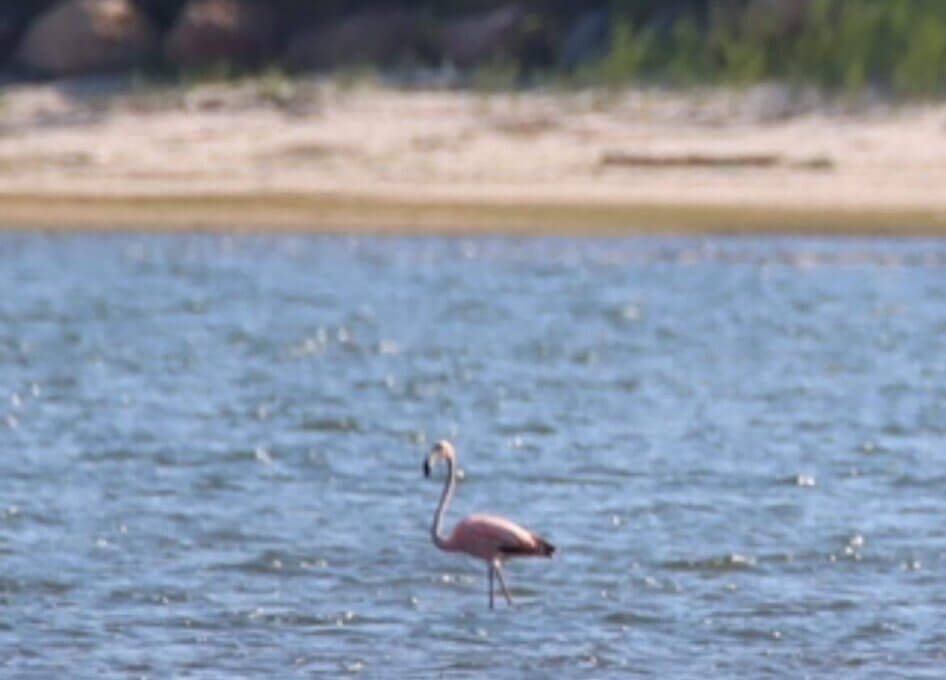Rare Sighting of American Flamingo Made in East Hampton

Rare, but not unprecedented. An American flamingo was spotted in East Hampton’s Georgica Pond to much fanfare on Friday, May 31.
It is suspected that the American flamingo was displaced by Hurricane Idalia, a Category 4 hurricane that hit the southeastern part of the U.S. last August, said Shaibal Mitra, a biology professor at the College of Staten Island.
“One thing that we know for sure is there was a hurricane and a number of flamingos showed up in North America,” Mitra said. “There were reports of sightings in New York, Pennsylvania, and other places in the Northeast.”
The flamingos could have been transported physically by the hurricane into the U.S. or the hurricane may have disturbed their breeding or non-breeding habitat, causing the bird to want to leave because of the change in resource supplies. It is probably a combination of the two, said José R. Ramírez-Garofalo, a PhD candidate in the Moghe lab at Rutgers University.
The flamingos overwintered in the southeast, specifically in Florida, and are now undergoing a process called dispersal, where they are looking for places to breed, Ramírez-Garofalo said.
“This bird is probably looking for a place to go and obviously isn’t finding it,” Ramírez-Garofalo said. “The temperatures are right. It’s the summer, it’s hot, it’s mimicking its native range. It could stay as long as it wants to until the temperature becomes unbearable and it leaves or it dies.”
It is not unusual for a bird to go far outside of its normal range sometimes. This is called vagrancy. Occasionally, a bird will go in an unusual direction or an unusual distance away from its typical geographic range.
“If a little warbler showed up far outside of its range, maybe a bird watcher would notice it and realize that something unusual was there,” Mitra said. “But everyone knows what a flamingo is — it’s big and pink, so people noticed it. But this is not unusual.”
Flocks of flamingos regularly migrated from the Bahamas to Florida until the 1900s, according to the National Audubon Society, a nonprofit organization that helps with the conservation of birds and their habitats.
“Today, most flamingos seen on the loose in North America are considered suspect, as possible escapees from aviaries or zoos,” the Audubon Society website reads.
In this case, it is suspected that the American flamingo came from its normal range. It has happened seven times in New York, going back to 1915 and as recently as 1978, according to Mitra.
“It has happened before, but people have wondered in the past if those earlier ones were escapees. I suspect that at least some of them were natural migrants,” Mitra said.
The bird has not been spotted in Georgica Pond since Saturday, June 1. On the afternoon of June 2, a flamingo was found in Cape Cod that had a similar appearance and could be the same bird.
“It would make sense, if you think this is an individual flying north and east from its normal range, deciding to keep exploring a little further. Whether it decides to stay in one place for a long time could depend on whether it finds food or just wants to keep exploring,” Mitra said.
It is likely we will continue to see this pattern increase.
“As climate change continues to increase precipitation and temperatures in our region, we will see species like this coming north more frequently. We are seeing more birds like flamingos coming northward,” Ramírez-Garofalo said.









